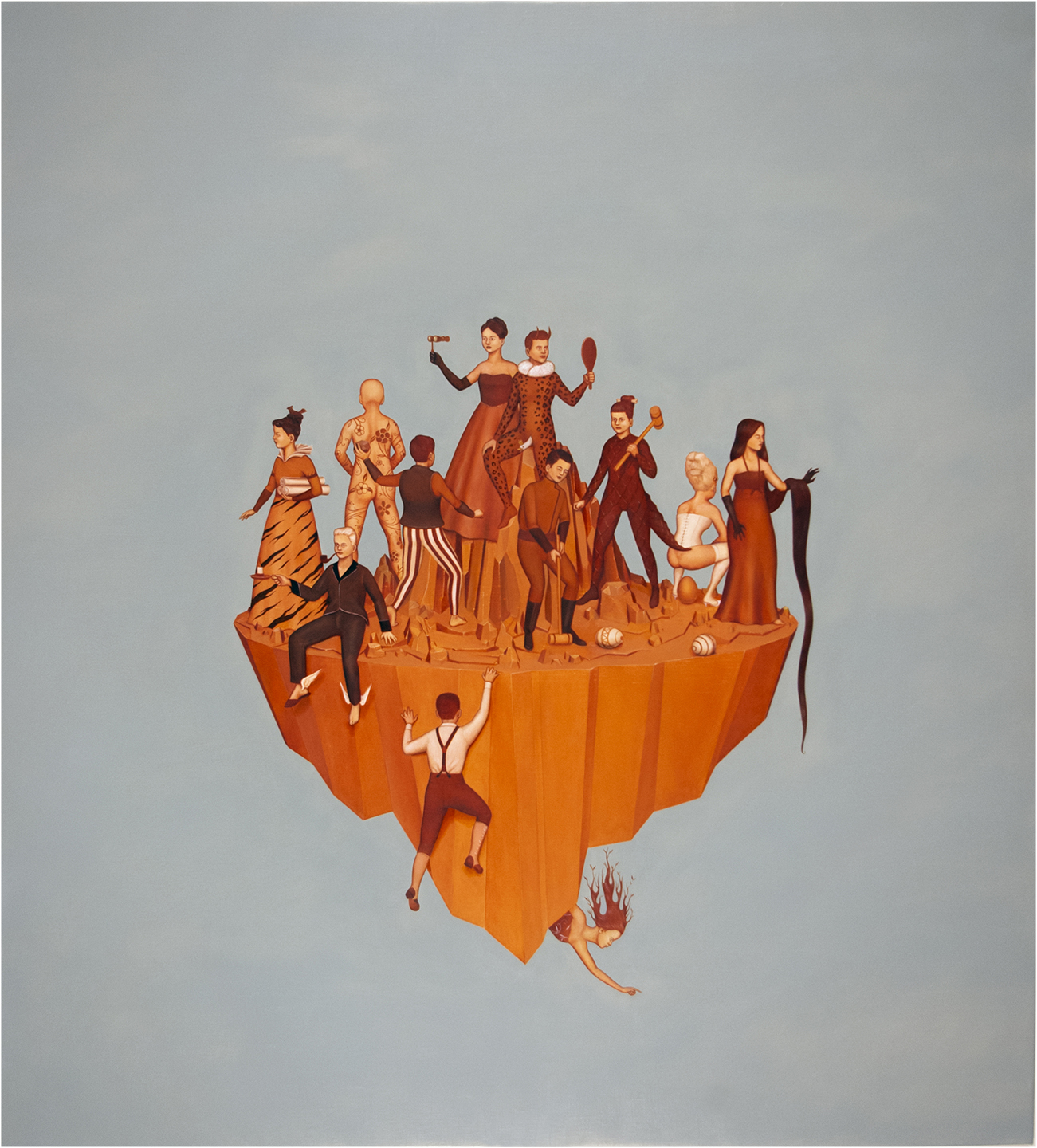
The late painter Thomas Kinkade, a self-monikered “Painter of Light,” garnered a reputation for his idyllic and realistic scenes, which brought him worldwide acclaim. Though his career was avidly followed by enthusiasts of pastoral paintings, some may be surprised by an early involvement with Ralph Bakshi Studios’ “Fire and Ice,” the 1983 cult animated film conceived by Bakshi and Frank Frazetta. Kinkade helped craft the movie’s rich and gorgeously illuminated backgrounds.




At the time, Kinkade was beginning to experiment with light in the medium—and how to craft absorbing worlds with this element. Surely, the backdrops created for the film spurred that narrative more. “Fire and Ice” (not to be confused with George R.R. Martin’s “A Song of Ice and Fire” book series) is a mash-up of fantasy and adventure, in which magic, enormous axes, and the forces of nature are conjured.


James Gurney, left, and Thomas Kinkade, right, working in Bakshi Productions on “Fire & Ice.”


The elaborate scenes were created via rotoscoping, which means they were shot as live action takes and then traced frame by frame onto cels. Kinkade joined the project at age 21, along with friend James Gurney. His work is marked by the striking glow of the backdrops, hidden within mountains and flora or burning below as molten lava.
Kinkade died in 2012, after achieving success for a style for which his name became synonymous. Below, check out examples of his later work.






 For his most recent exhibition, Those Bloody Colours, presented at Galerie Eigen + Art in Berlin, Martin Eder featured lifelike paintings of women in a medieval time warp. Eder's artworks are scaled true to life and rendered in vivid tones, imbuing them with a tactile and emotive quality with which one immediately connects. Gazing at the eyes of the women, cast downward as if in humble contemplation after battle, one desires the warriors to look up and out.
For his most recent exhibition, Those Bloody Colours, presented at Galerie Eigen + Art in Berlin, Martin Eder featured lifelike paintings of women in a medieval time warp. Eder's artworks are scaled true to life and rendered in vivid tones, imbuing them with a tactile and emotive quality with which one immediately connects. Gazing at the eyes of the women, cast downward as if in humble contemplation after battle, one desires the warriors to look up and out. Painter Edward del Rosario's theatrical, yet controlled tableaus carry cross-cultural references. Often in the artist’s work, each of the characters seem to have their own narrative or motivation, creating a piece teeming with both humor and surprising complexity, once absorbed.
Painter Edward del Rosario's theatrical, yet controlled tableaus carry cross-cultural references. Often in the artist’s work, each of the characters seem to have their own narrative or motivation, creating a piece teeming with both humor and surprising complexity, once absorbed. Hailing from Santa Fe, New Mexico,
Hailing from Santa Fe, New Mexico,